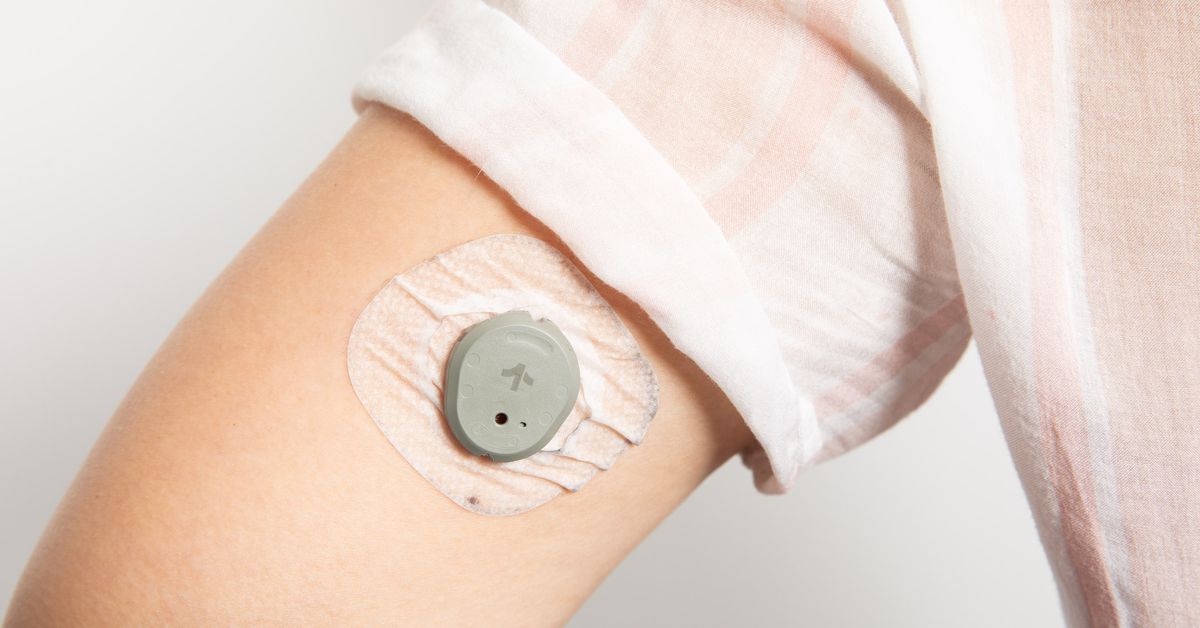/cdn.vox-cdn.com/uploads/chorus_asset/file/25575447/247217_Dexcom_CGM_AKrales_0166.jpg)
As a wearables reviewer, every morning I roll over, pull out my phone, and check my sleep stats. But that’s changed in the last 14 days. Instead, I’ve been checking my glucose levels. That’s because on the underside of my left arm is a Dexcom Stelo continuous glucose monitor (CGM). Some days, I’m relieved by what I see. Other days, I wonder if I should call my doctor.
The Stelo is unique in that it’s one of three FDA-cleared over-the-counter CGMs. (The other two are from Abbott.) Typically, CGMs have been used by Type 1 diabetics — those who produce little to no insulin, a hormone that regulates blood sugar — to monitor their condition. The Stelo, however, is aimed at Type 2 diabetics, specifically those who don’t rely on insulin. Unlike Type 1, Type 2 diabetes develops over time as the body becomes more insulin-resistant. While some Type 2 diabetics rely on insulin, the vast majority manage their blood sugar with lifestyle changes and oral medication.
The pitch of OTC CGMs like Stelo is they could theoretically help people with Type 2 get to manageable levels where they don’t have to take medication. For prediabetics, it could even help them reverse their condition. In these use cases, a CGM could be a nifty tool for learning how certain foods or exercise can impact glucose levels.
The catch is that CGMs generally aren’t covered by health insurance if you don’t take insulin, making them too expensive for the average person. When I met with Dexcom in January, its COO, Jake Leach, emphasized that Stelo would be more accessible. And it is, though some folks will still find it pricey. With Stelo, you have two options. You can pay $99 for a single pack of two sensors (30-day supply). Or, you could pay a monthly $89 subscription and have two sensors delivered every month. The devices are also HSA- and FSA-eligible.
Stelo works similarly to Nutrisense, a CGM-based platform I tested last year for non-diabetics looking to optimize their metabolic health. There’s an app that guides you through inserting the CGM. (It’s easy and surprisingly painless.) Depending on whether you identify as a Type 2 diabetic, someone with prediabetes, or a non-diabetic, you’ll be given a recommended target glucose range. After a roughly 30-minute calibration period, you can view your real-time glucose levels in the app. Stelo also integrates with iOS and Android’s health APIs, so you can sync your exercise and sleep data. You can also manually log your meals. If your glucose spikes, you’ll get an alert sent to your phone.
Overall, I found Stelo easy to use. The data is kept relatively streamlined, without much visual clutter. However, it does require a degree of vigilance. I’ve had a handful of glucose spikes in the past two weeks, but the alerts don’t come through on my phone until 20–60 minutes later. (You can watch spikes happen closer to real time, however, if you continually monitor the app. It’s just not always practical.)
That’s not necessarily egregious, as this isn’t designed for Type 1 diabetics, but it’s not great. I also wished it was easier to log my meals. These days, I’ve been tracking my macros in another app, so it would’ve been nice to just import that information into the Stelo app. Instead, I had to cross-reference and manually log everything twice.
But what would’ve been most helpful is extra insight into interpreting my glucose data. (Quick note: I’ve been testing a prerelease version of the app, so not everything was as it’ll be in the final product.) There’s no way to view your daily historical data long-term. If I want to show my doctor a pattern of how my glucose spikes after certain exercises, I have to take a screenshot that day. I’m also not sure whether my numbers are good. While I managed to spend about 95 percent of the time in my recommended range, my average glucose level is higher than what it was while testing Nutrisense last year. I’ve also been mildly concerned at how many glucose spikes I’ve had that don’t have an obvious explanation like high-intensity exercise or a carb-heavy meal.
I’ve since scheduled a doctor’s appointment to get my blood sugar tested. It’s personal for me. My dad had Type 2 diabetes, and I have polycystic ovary syndrome, a hormonal condition that can increase insulin resistance. Ostensibly, this is the Stelo working as it should. I, a person with a higher risk of developing diabetes, saw a concerning trend in my data, and now I’m proactively going to consult with a medical professional about it.
I have my quibbles with the Stelo app, but it’s still very early days, and this is an emerging category. Speed bumps are to be expected. I plan to test the Stelo further, and I’m curious to see how my conversation with my doctor will go. Even so, from my time thus far, I can see how using Stelo, in concert with a doctor, could be helpful for people with prediabetes and Type 2 diabetes. What’s less clear is how the rest of the market will glom onto more widely accessible CGMs. Occasionally, I see wellness influencers peddling CGM use for weight loss and to “fix” metabolic health. Several startups exist based around that premise, even though we have yet to prove whether this is a worthy use for CGMs. We’ll have to see where this goes, but at the very least, I appreciate that Dexcom has kept its focus on the people who could most benefit from this tech — and at a more accessible price.
Services Marketplace – Listings, Bookings & Reviews
